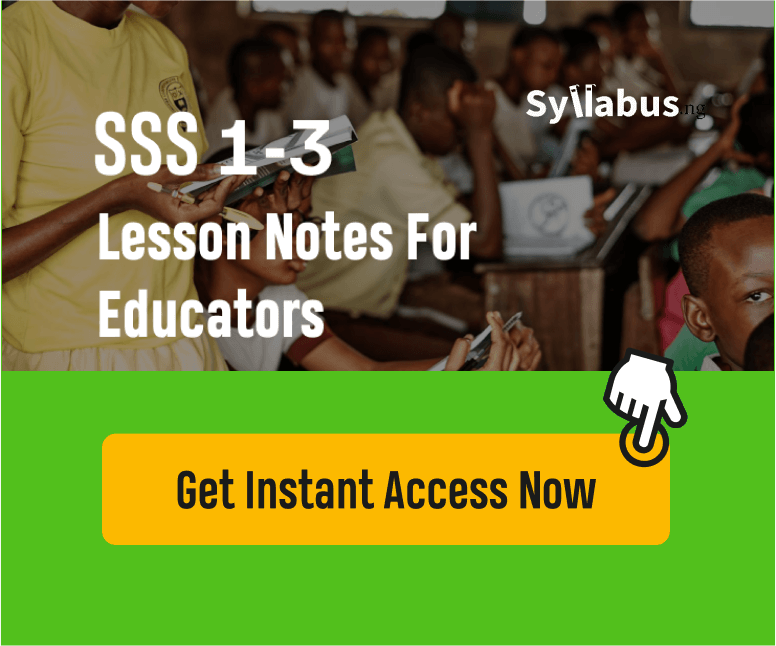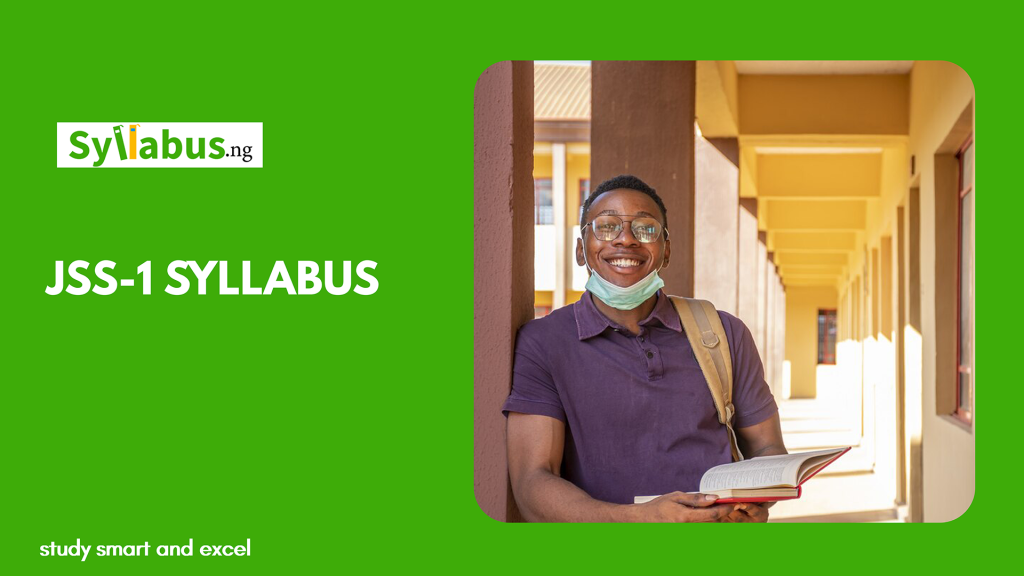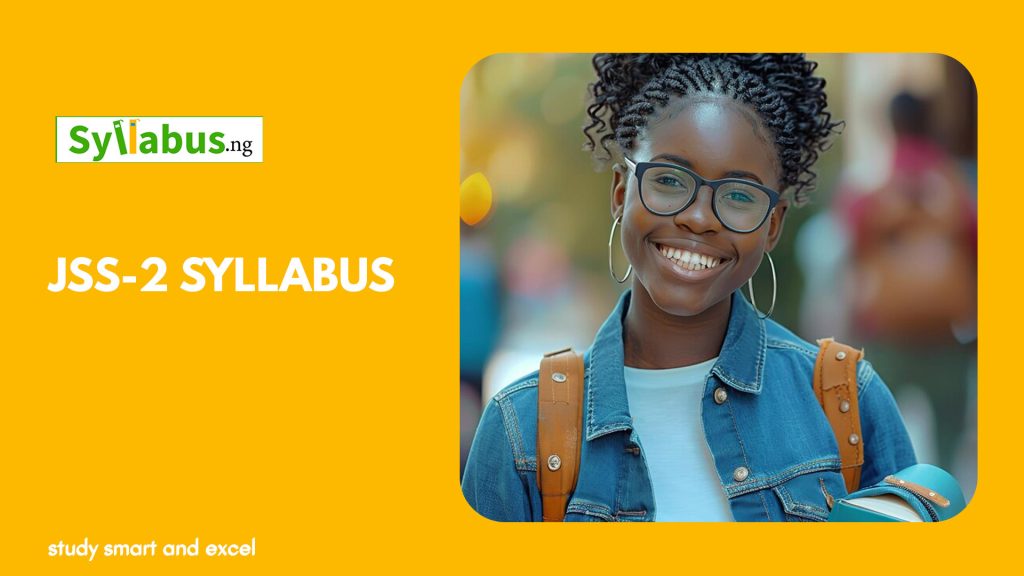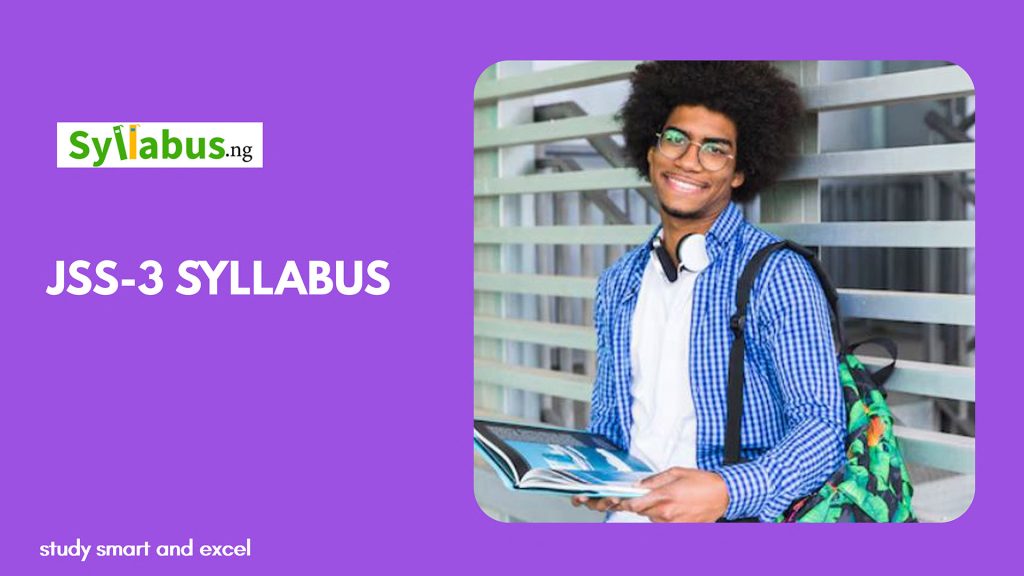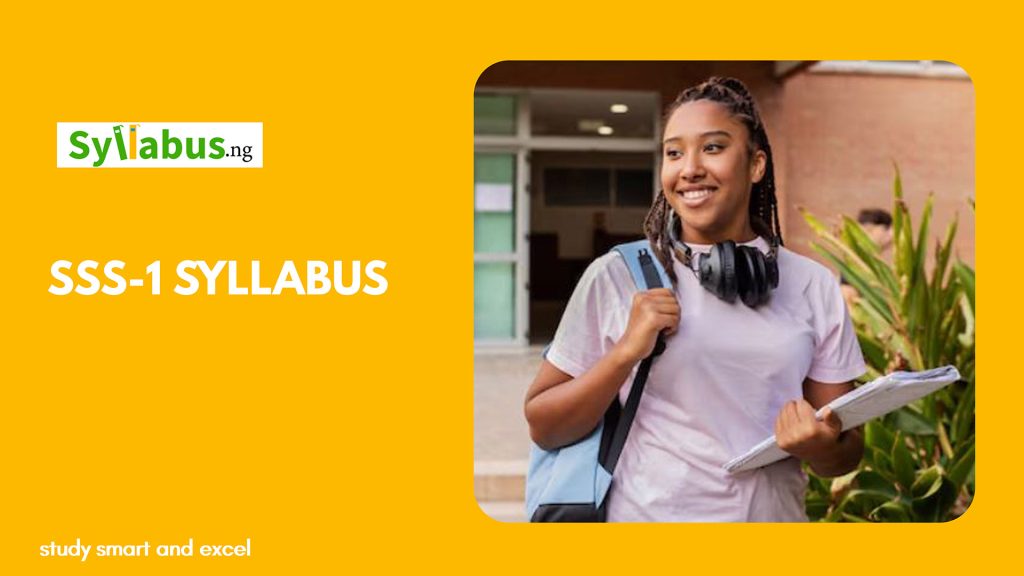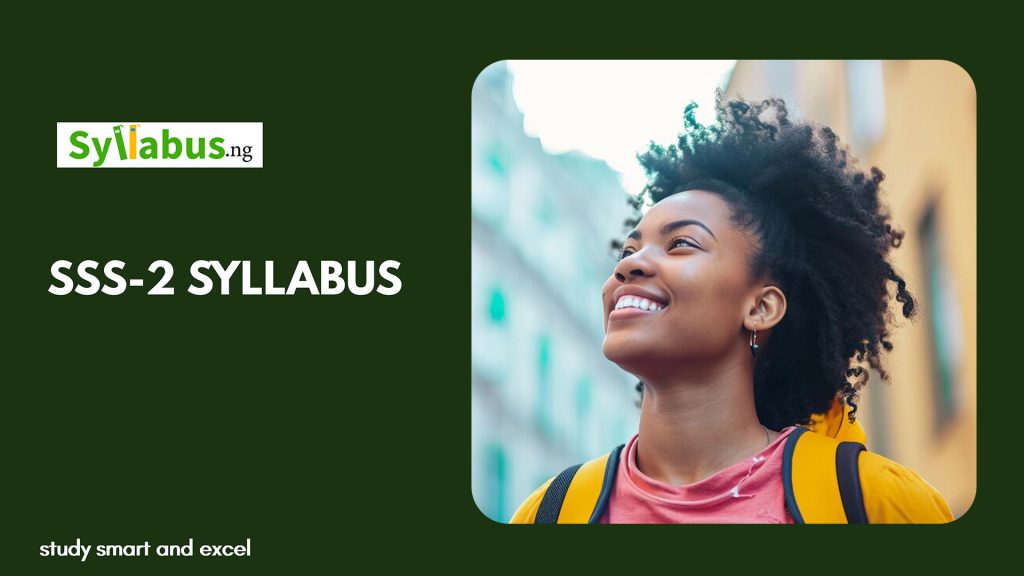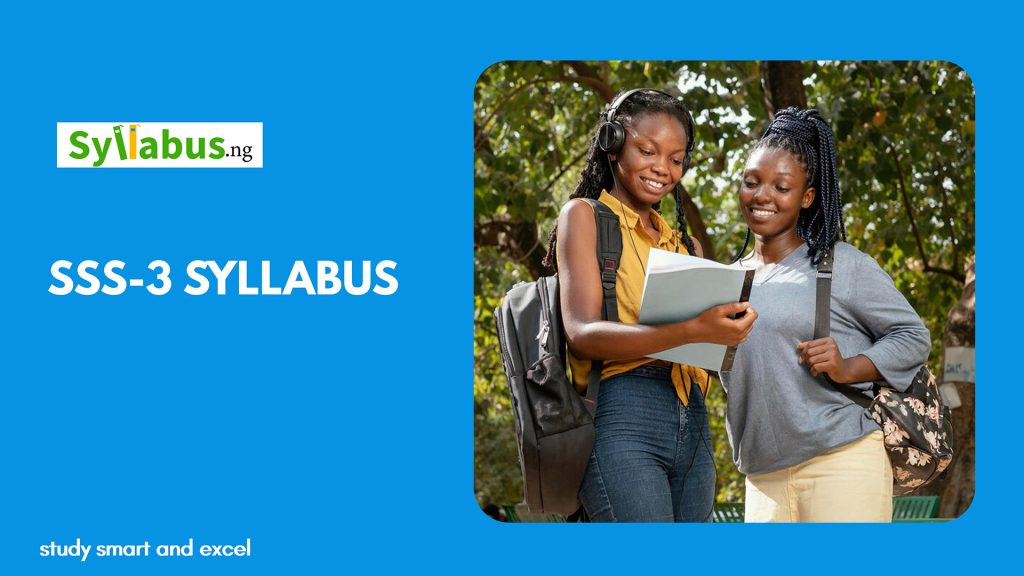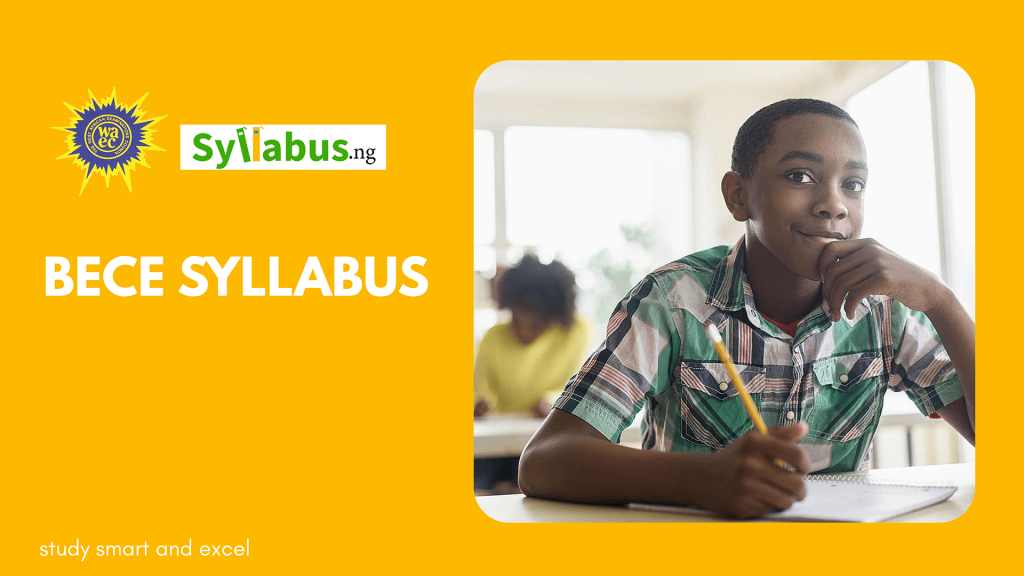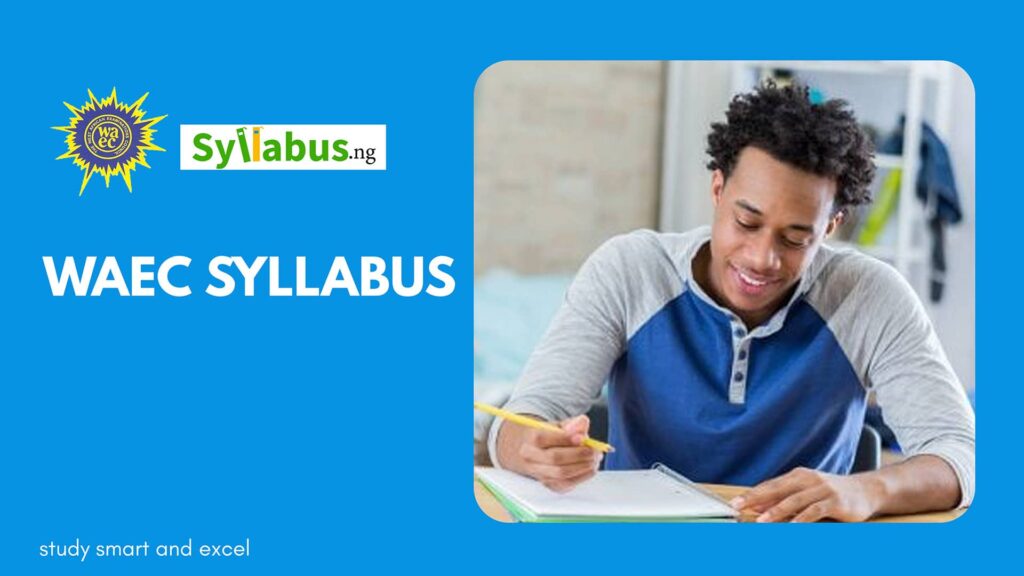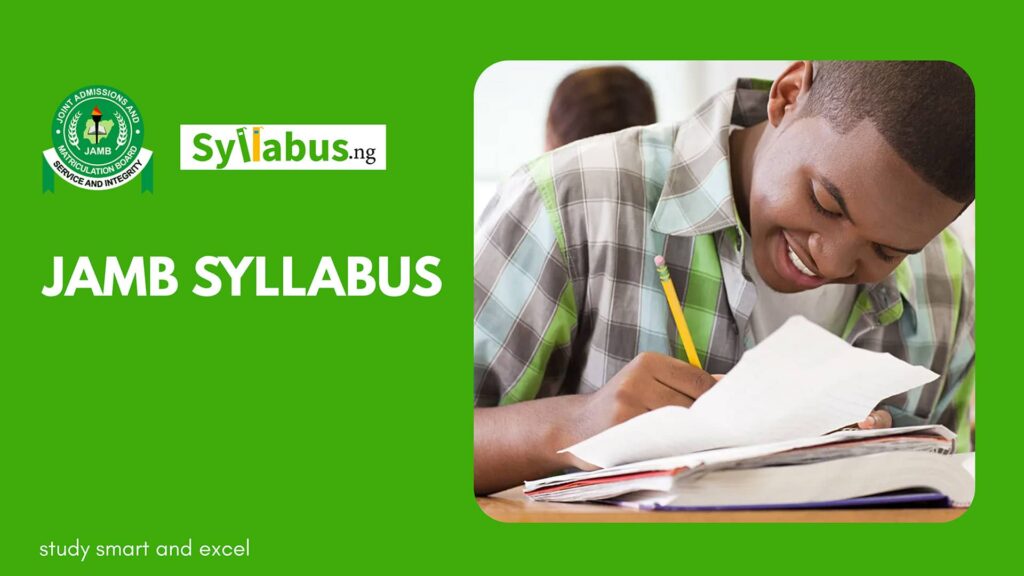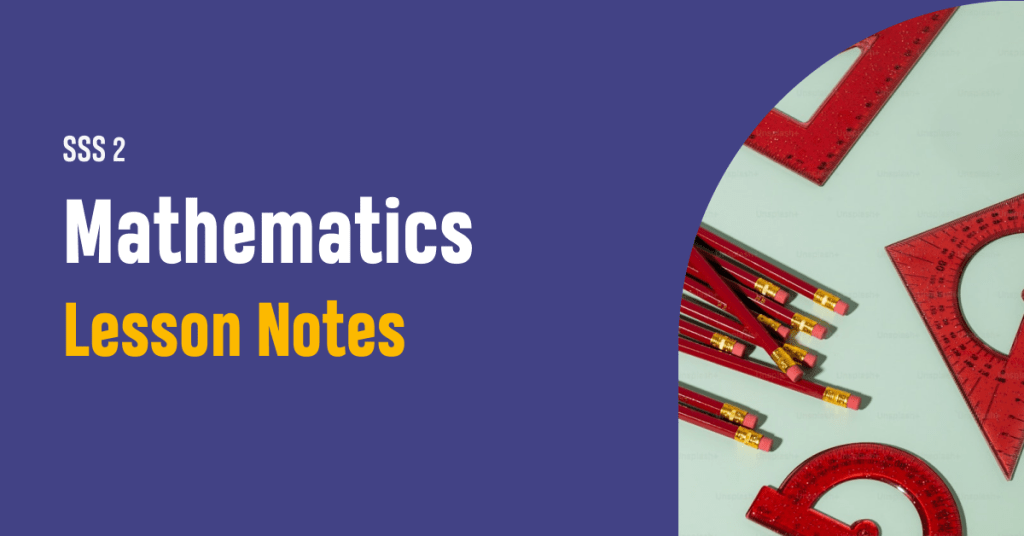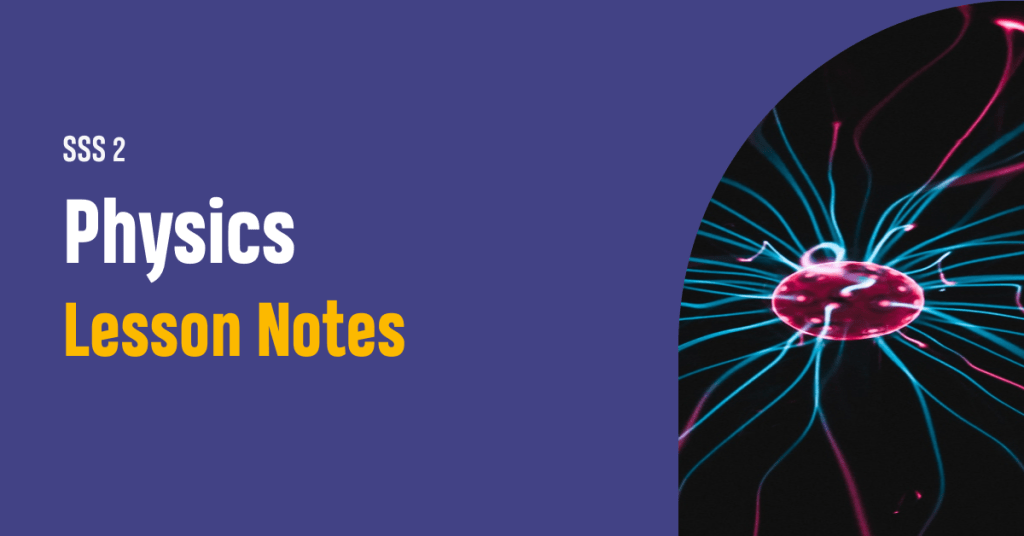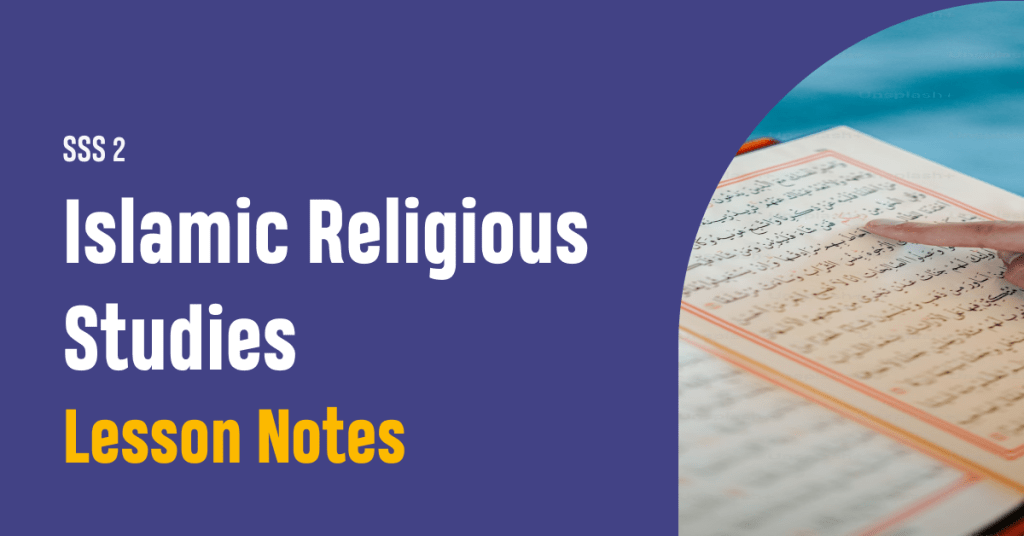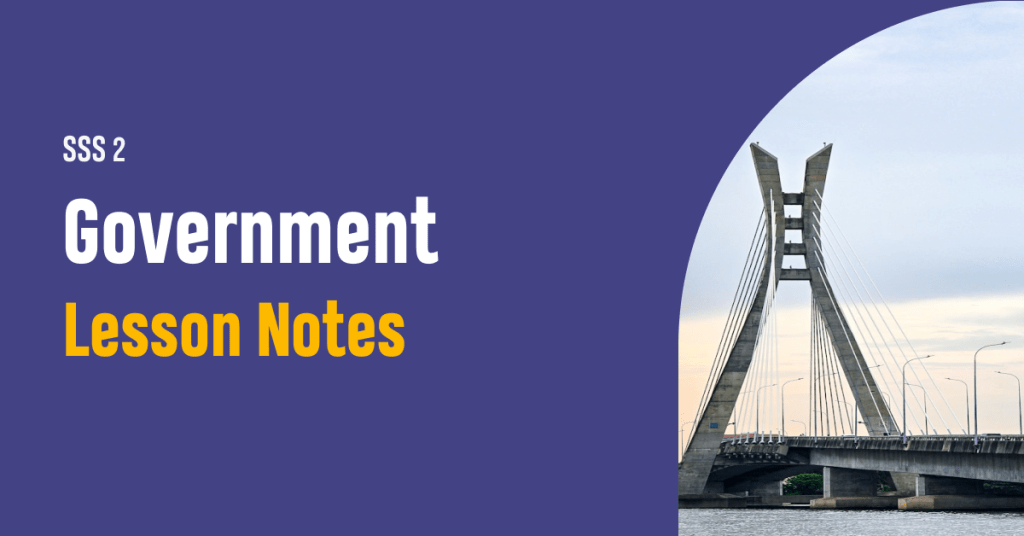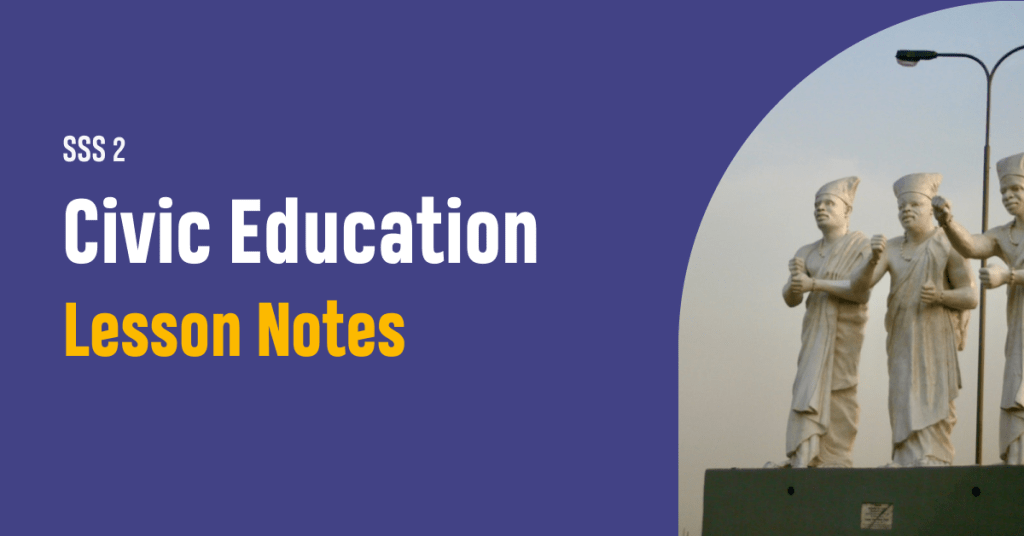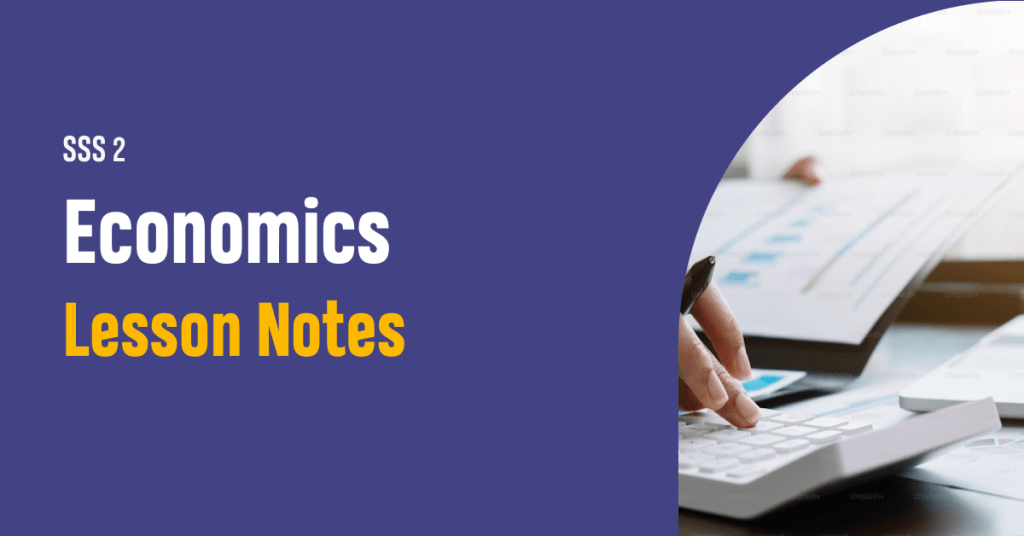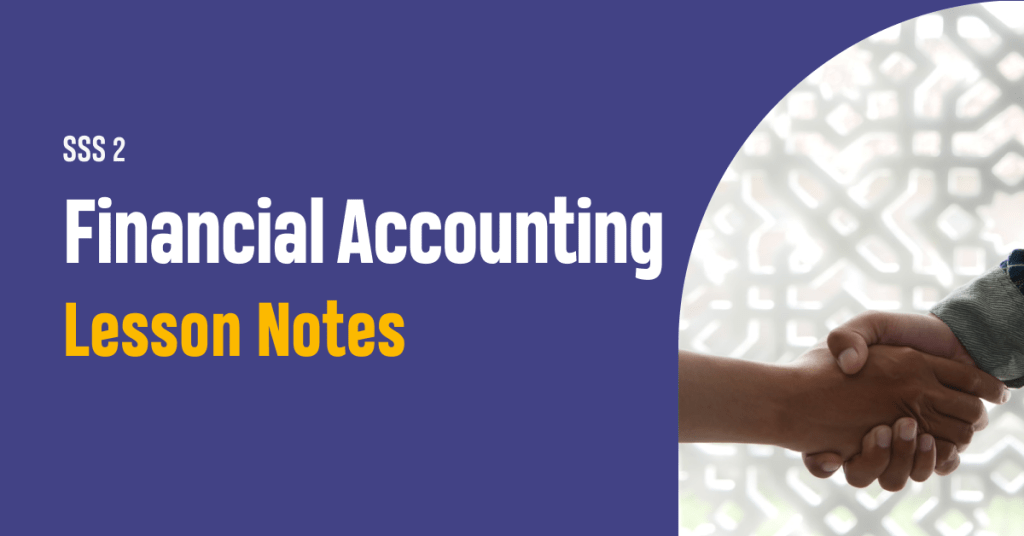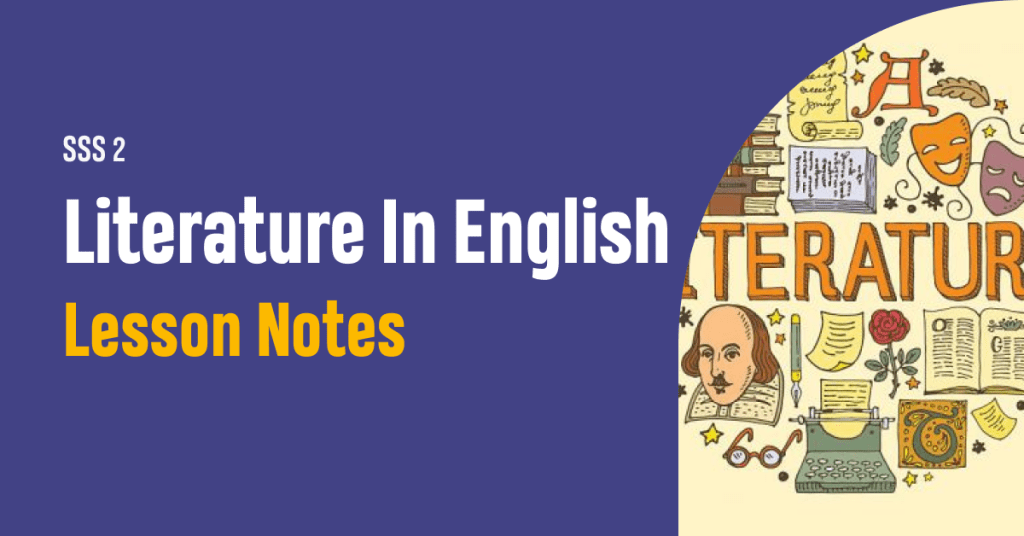SS2 Mathematics Scheme of Work
Download the Senior Secondary School 2 (SS2) Unified Scheme of Work for Mathematics to serve as a guide for educators

Home » SSS2 Scheme of Work » SSS2 Mathematics Scheme of Work
Home » SSS2 Scheme of Work » SSS2 Mathematics Scheme of WorkAbout SS2 Mathematics Scheme of Work
In Senior Secondary School 2 (SSS2), Mathematics equips students with the skills to tackle real-life problems. At this level, learners explore more complex mathematical concepts, building on what they have previously learned in SSS1.
The Lagos state unified scheme of work for Mathematics covers advanced areas such as algebra, geometry, trigonometry, calculus, and statistics. These topics improve analytical and problem-solving capabilities and prepare students for further education and diverse career opportunities.
Studying Mathematics in SSS2 is crucial for building a foundation for advanced studies, enhancing problem-solving and critical thinking skills, and applying knowledge in real life. It prepares students for standardized tests and diverse career opportunities and also fosters perseverance and discipline. Mastery in Mathematics is essential for academic success and informed decision-making in everyday life.
Achievement Standards
At the end of the SSS2 session, students can;
- Apply the use of binary system into day-to-day activities;
- Apply number base system to computer;
- Illustrate the application of modular arithmetic in daily life;
- Apply the laws of indices to solve problems involving negative, zero, and fractional indices;
- Demonstrate the application of variation in real life;
- Create a group to explain terms under basic concepts of sets;
- Calculate values that are required using a Venn diagram in daily activities;
- Use geometric circle knowledge to construct a football field, post, and pitch;
- Describe the sound waves and light waves through trigonometric ratios;
- Apply trigonometric ratios to solve life problems, problems involving angles of elevation, and learning problems.
Assessment Guide
In SS2, mathematics is assessed through written exams, quizzes, homework, projects, class participation, ongoing evaluations, and in-depth investigations. These varied methods evaluate students’ comprehension, problem-solving abilities, and practical application of concepts, ensuring an all-round assessment of their mathematical skills.
Grading follows a scale from A to F, with A representing excellent performance, typically scoring around 70% or 80%, and F indicating failure, usually below 50% or 45%.
Download SSS2 Mathematics Scheme of Work

Know what’s expected of you as an educator
Download the Lagos State Unified Scheme of Work for Senior Secondary School Two (SSS2) Mathematics
Get SSS2 Mathematics Lesson Notes

Never bother about writing lesson notes again. Get our well written SSS 2 Mathematics lesson notes for (First, Second & Third Term).
Its’s printable, in PDF Format, editable, and easy to use.
SS2 First Term Scheme of Work for Mathematics
| LAGOS STATE MINISTRY OF EDUCATION UNIFIED SCHEMES OF WORK FOR SENIOR SECONDARY SCHOOLS | ||
| Mathematics Scheme of Work for Senior Secondary Schools 2(SSS2) | ||
| CLASS | SS2 | |
| SUBJECT | MATHEMATICS | |
| TERM | First Term | |
| WEEK | TOPICS | Learning Objectives |
| 1 | REVISION OF SS1 WORK – Review of logarithm numbers greater than 1 – Comparison of characters of logarithm and standard form of numbers | By the end of the lesson, students should be able to: i. explain some questions on previous lessons ii. Compare characteristics of logarithmns with standard form of numbers less than 1 iii. Solve questions on standard form and ordinary form |
| 2 | LOGARITHM OF NUMBERS – less than 1, including multiplication, division, powers and roots – Solution of simple logarithm equations | By the end of the lesson, students should be able to: i. solve questions involving multiplication, division, powers and roots of numbers less than 1 ii. solve simple logarithmic equations iii. interpret questions into logarithmic equation and indices |
| 3 | ACCURACY OF RESULTS USING LOGARITHM TABLES AND CALCULATORS – Approximations and percentage error | By the end of the lesson, students should be able to: i. solve and compare questions using logarithm table, calculators ii. solve questions on approximation and percentage error iii. apply the use of percentage error to everyday life |
| 4 | SEQUENCES AND SERIES – Meaning and types of sequence – Examples of AP – Calculation of: a) first term (a) b) common difference (d) c) nth term – Arithmetic mean and sum of AP – Practical problems involving real life situations | By the end of the lesson, students should be able to: i. explain the meaning of Arithmetic Progression (AP) and types of sequences ii. apply formulas to solve questions on first term, common difference and nth term of a given AP iii. calculate the sum of a given AP |
| 5 | GEOMETRIC PROGRESSIONS – Calculation of: a) first term (a) b) common ratio (r) c) nth term d) geometric progression e) sum of terms of geometric progression f) sum to infinity g) practical problems involving real life situation | By the end of the lesson, students should be able to: i. explain the meaning of Geometric Progression (GP) and types of sequences ii. apply formulas to solve questions on first term, common ratio and nth term of a given geometric progression iii. calculate the sum of a given GP using the required formula |
| 6 | REVISION OF FACTORIZATION OF COMMON SQUARES – Solution of quadratic equation by the method of completing the square – Deducing quadratic formulas from deducing the square | By the end of the lesson, students should be able to: i. find the constant k which makes the quadratic expression a perfect square ii. explain the meaning of a quadratic iii. solve questions on quadratic equation using the method of completing the square iv. solve questions on quadratic equation using the method of formula v. apply the use of quadratic equation in daily life |
| 7 | PERIODIC/MID-TERM TEST OPEN DAY | By the end of the lesson, students should be able to: i. recapulate the first half term’s work learnt ii. attempt correctly the test questions |
| 8 | CONSTRUCTION OF QUADRATIC TABLES FROM SUM AND PRODUCT ROOTS – Word problems leading to quadratic equation | By the end of the lesson, students should be able to: i. explain sum and product of roots ii. form quadratic equation from the given root using the sum and product of the root iii. interpret word problems leading to quadratic equations |
| 9 | SIMULTANEOUS LINEAR EQUATION – Solution of linear and quadratic equation – Graphical solution of linear and quadratic equation | By the end of the lesson, students should be able to: i. solve problems in simultaneous linear equation using elimination, substitution, and graphical methods ii. draw graphs to solve problems related to quadratic equations iii. demonstrate the application of quadratic graphs to everyday life |
| 10 | USE OF GRAPHICAL METHODS TO SOLVE OTHER RELATED EQUATIONS – Word problems leading to simultaneous equations | By the end of the lesson, students should be able to: i. draw graphs to solve problems related to simultaneous equations ii. solve word problems leading to simultaneous equations iii. apply word problems leading to simultaneous equations |
| 11 | REVISION | |
| 12 | EXAMINATION | |
SS2 Second Term Scheme of Work for Mathematics
| CLASS | SS2 | |
| SUBJECT | MATHEMATICS | |
| TERM | SECOND TERM | |
| WEEKS | TOPICS | LEARNING OBJECTIVES |
| 1 | REVISION OF LAST TERM’S WORK | |
| 2 | STRAIGHT LINE GRAPHS – Gradients of straight line – Gradients of a curve – Drawing of tangents in a curve | By the end of the lesson, students should be able to: i. determine the x- and y- intercept of a straight line ii. draw the graph of a linear equation iii. determine the gradient at a straight line iv. draw the tangent to a curve at a given point |
| 3 | INEQUALITIES – Revision of linear inequalities in one variable – Solution of inequalities in two variables – Range of values of combined inequalities | By the end of the lesson, students should be able to: i. solve problems of linear inequalities in one and two variables ii. combine two inequalities to form component inequality and number line iii. solve and represent the solution of compound inequality in a graph |
| 4 | CIRCLE THEOREM – Tangent properties of a circle – Perpendicularity of a tangent, radius – Angles in alternate segments – Two tangents to a circle from an external point | By the end of the lesson, students should be able to: i. solve tangent properties of a circle ii. prove and solve problems on angles in alternate segments iii. calculate the radius of a circle given tangent from external point and the distance of the external point from the center of the circle |
| 5 | TRIGONOMETRY – Deviation of some rule and application – Deviation of cosine rule and application | By the end of the lesson, students should be able to: i. derive and apply sine rule ii. sketch triangles for sine and cosine rules iii. solve questions using sine and cosine rules |
| 6 | ALGEBRAIC FRACTIONS – Simplification of fractions – Operation in algebraic fractions – Equation involving fractions – Undefined fractions eg if y= b/ax + c, then y is undefined when ax + c = 0 | By the end of the lesson, students should be able to: i. simplify a given algebraic fraction to its lowest term using the the Lowest Common Factor (L.C.M) of the denominator of the fractions ii. solve problems on algebraic fraction involving addition, substraction, division and multiplication iii. determine the undefined value of a fraction iv. solve equation involving fraction |
| 7 | MID TERM TEST/BREAK | |
| 8 | FRACTIONS – Substitution in fractions – Simultaneous equations involving fractions | By the end of the lesson, students should be able to: i. obtain the value of a fraction given values of knowing ii. solve simultaneous equations involving fractions iii. explain the application of fractions in daily life |
| 9 | SURD – Meaning of rational and irrational numbers leading to the definition of surds – Rules guiding the basic operation of surds – Conjugate of binomial surds using the idea of difference of two squares | By the end of the lesson, students should be able to: i. differentiate between rational and irrational numbers ii. state and apply the rules of addition and substraction of surds iii. state and apply the rules of multiplication and division of surds iv. solve problems involving conjugate of binomial surds |
| 10 | CHORD PROPERTIES OF CIRCLES – Perpendicular sector of chords – Distance of equal chords from the center of the circle – Angles subtended by two equal chords | By the end of the lesson, students should be able to: i. apply Pythagoras theorem to solve problems of distance of equal chords ii. solve problems on angles subtended by two equal chords at the center iii. solve problems of perpendicular bisector of chords |
| 11 | CIRCLE THEOREM – Angle properties of a circle ( angle subtended by an arc at the center is twice the one subtended at the circumference) – Angle in the same segment – Angle in a semi-circle – Opposite angles of cyclic quadrilaterals | By the end of the lesson, students should be able to: i. explain the meaning of center and arc ii. prove that the angle which an arc subtends at the center is twice the angle it subtends at the circumference iii. solve practical problems on application of the theorem iii. prove that the angle in the same segment of a circle are equal iv. angle in a semi-circle is a right angle v. the opposite angles in a cyclic quadrilateral are supplementary vi. the exterior angle of a cyclic quadrilateral is equal to the interior angle |
| 12 | REVISION/EXAMINATIONS |
SS2 Third Term Scheme of Work for Mathematics
| CLASS | SS2 | |
| SUBJECT | MATHEMATICS | |
| TERM | SECOND TERM | |
| TOPICS | LEARNING OBJECTIVES | |
| 1 | REVISION OF LAST TERM’S WORK | |
| 2 | GRAPH OF LINEAR EQUALITY IN TWO VARIABLES – Maximum and minimum value of simultaneous linear equation | By the end of the lesson, students should be able to: i. draw the graph of linear equalities ii. illustrate the region that satisfies equalities iii. find the maximum and minimum values of functions f(x,y) = ax + by under the set of inequalities |
| 3 | APPLICATION OF LINEAR INEQUALITY IN REAL LIFE – Introduction to linear programming | By the end of the lesson, students should be able to: i. interpret the practical problems of linear inequalities using real life situations ii. solve problems on linear inequalities leading to linear programming |
| 4 | BEARINGS – Angles of elevation and depression – Definition of 4, 8 and 16 cardinal points – Notation of bearings of cardinal rotation – 3 digit bearing eg: two type: Surveyor’s type, Military type: N75E, S350W – Practical problems on bearing | By the end of the lesson, students should be able to: i. solve problems in trigonometric ratios ii. solve problems on angles of elevation and depression iii. define and draw 4,8 and 16 cardinal points iv. solve practical problems on bearing |
| 5 | STATISTICS (REVISION) – Mean, median, mode, range, variance, and standard deviation – Calculation of class boundaries interval of scores of grouped data – Calculation of cumulative frequency | By the end of the lesson, students should be able to: i. solve problems on mean, median, mode and range ii. calculate variance and standard deviation accurately iii. calculate class boundaries, class intervals, class mark (mid-mark), statistics work iv. demonstrate the calculation of cumulative frequency |
| 6 | CUMULATIVE FREQUENCY GRAPH – Drawing of cumulative frequency curve (graph) or Ogive – Using graph of cumulative frequencies to estimate median, quartile, percentiles and other relevant estimates – Application of Ogive to everyday life | By the end of the lesson, students should be able to: i. illustrate the computed data to draw cumulative frequency curve ii. make estimates from the curve iii. apply cumulative frequency curves to real life situations iv. present data from capital market, stock market |
| 7 | MID-TERM BREAK | |
| 8 | DETERMINATION OF MEAN, MEDIAN AND MODE OF GROUPED FREQUENCY DATA – Definition and examples of experimental outcomes – Random experiments – Sample space – Sample points – Event space – Probability | By the end of the lesson, students should be able to: i. determine the mean, median and mode of grouped data ii. list practical examples of each of them iii. apply the use of probabilities in daily life |
| 9 | PROBABILITY – Chance Instruments – The dice – The coins – A pack of playing cards – Theoretical probability – Relative limiting value of relative frequency – Sample probable on equprobable sample space | By the end of the lesson, students should be able to: i. list the chance instruments used in probability ii. explain the frequent approach to theoretical probabilities iii. describe with examples the equprobable sample space iv. solve problems on equprobable sample space |
| 10 | ADDITION AND MULTIPLICATION RULES OF PROBABILITY – Mutually exclusive events and addition ‘OR’ rule – Complementary event and probability rule – Independent events and multiplication ‘AND’ rule – Solving sample problems on mutually exclusive, independent and complementary events and experiments with or without replacement – Practical application of probability in health, finance, population, etc | By the end of the lesson, students should be able to: i. explain mutually exclusive, independent and complementary events with examples ii. solve sample problems on probability iii. experiment the use of probability in different events |
| 11 | REVISION | |
| 12 | EXAMINATION |
Get SSS2 Mathematics Lesson Notes

Never bother about writing lesson notes again. Get our well written SSS 2 Mathematics lesson notes for (First, Second & Third Term).
Its’s printable, in PDF Format, editable, and easy to use.
Recommended Mathematics Textbooks for Senior Secondary School 2
- Transformation Mathematics by Chinemeze Austin E. Nwabunwanne. University Press Plc
- Excellence in Mathematics. Contributor/Reviewer M.O Giwa. Cambridge University Press
- Spectrum High Standard Mathematics by Gabriel A, Oulmi M, Nwachukwu U. et al. Spectrum Books Ltd SS 1-3
- New General Mathematics by Mf Macrae. AO Kalejaiye, ZI Chima, GU Garba. Pearson Education Limited SS 1-3
- Extension Modern Mathematics by Frank Yeboah, olusanya osunre et al. Extension Publication
- SS 1-3 All Schools Mathematics by Ofojebe Tochukwu Sunny. Best Printer
- New School Secondary Mathematics for Senior Secondary Schools
- Daily Mastery of Mathematics and English for SS1-3
- Aremu B and Ariyo S.O. Joytal Printing Press
SSS2 Scheme of Work for All Subjects
Trade Subjects
Download SSS2 Mathematics Scheme of Work

Know what’s expected of you as an educator
Download the Lagos State Unified Scheme of Work for Senior Secondary School Two (SSS2) Mathematics

